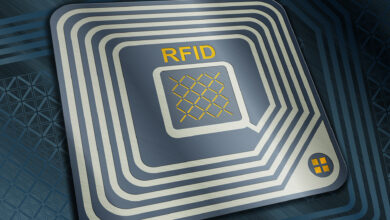All Cyber-Kinetic Security & Cybersecurity Posts
-
5G Security
Opportunity and Cybersecurity in the Age of 5G
The human will to innovate is seemingly relentless. The history of our species is one of continual development, with the last 350 years, in particular, representing staggering technological progress. The first industrial revolution mechanized production using natural elements like water. The second revolution used electricity to enable mass production; the third used electronics and information technology to automate production. The fourth industrial revolution unfolding all…
Read More » -
5G Security
IIoT and Trust and Convenience: A Potentially Deadly Combination
When microwave ovens first arrived on the market in 1967 they were met with public skepticism. Perhaps it was because, not long before, the same technology now promising to safely cook consumers’ evening meals was the backbone of a military radar. Perhaps it was the $495 price tag (more than $3,700 in today’s money). Whatever the reason, in the early 1970s the percentage of Americans…
Read More » -
5G Security
5G Network: A Quantum Leap in Connectivity – and Cyber Threats
The timeline of human history is marked by inflection points of major technological advancement. The plow, the printing press, the telegraph, the steam engine, electricity, the telephone, the internet: each of these breakthroughs precipitated tectonic shifts in how people lived and worked. Now, in the early part of the 21st century, we stand witness to the birth of a new industrial revolution built on 5th…
Read More » -
5G Security
NFC Security 101 (Non-5G IoT Connectivity Options)
NFC is a short range two-way wireless communication technology that enables simple and secure communication between electronic devices embedded with NFC microchip. NFC technology operates in 13.56 megahertz and supports 106, 212, or 424 Kbps throughput. There are three available modes of NFC communication: Read/write (e.g. for reading tags in NFC posters) Card emulation (e.g. for making payments) Peer-to-peer (e.g. for file transfers) There is no need for…
Read More » -
5G Security
RFID Security 101 (Non-5G IoT Connectivity Options)
Radio-Frequency Identification (RFID) is a technology commonly used for identification, status administration and management of different objects. It is important for people identification, as it is commonly deployed in the latest biometric passports. It operates in several frequency bands like Low frequency band from 125 kHz to 134 kHz, High frequency band with 13.56MHz working frequency, Ultra-high frequency band with 433 MHz working frequency and 860…
Read More » -
5G Security
Wi-Fi Security 101 (Non-5G IoT Connectivity Options)
The Wi-Fi represents wireless technology that includes the IEEE 802.11 family of standards (IEEE 802.11a, IEEE 802.11b, IEEE 802.11g, IEEE 802.11n, IEEE 802.11ac, etc.). Within 50m range, it operates in 2.4 GHz and 5GHz frequency bands,. This technology was developed for wireless networking of computer devices and is commonly called WLAN (Wireless Local Area Network), where the communication is realized between wireless routers typically connected…
Read More » -
5G Security
Bluetooth Security 101 (Non-5G IoT Connectivity Options)
Bluetooth is short-range wireless communications technology based on the IEEE 802.15.1 protocol. It works in a crowded license free 2.4 GHz frequency band and shares this resource with many other technologies. Bluetooth is the optimal solution for establishing small wireless networks called Piconets, by connecting two Bluetooth devices. One of these nodes is Master that can be connected via Bluetooth link to 7 other Bluetooth…
Read More » -
5G Security
Zigbee Security 101 (Non-5G IoT Connectivity Options)
Zigbee technology introduction Zigbee is wireless PAN (Personal Area Network) technology developed to support automation, machine-to-machine communication, remote control and monitoring of IoT devices. It evolved from IEEE 802.15.4 wireless standard and supported by the ZigBee Alliance. IEEE 802.15.4 standard determines specifications for the physical and data link layer and Zigbee Alliance provides standards from network layer to application layer. While Zigbee determines the contents…
Read More »







